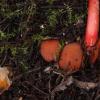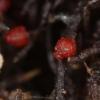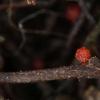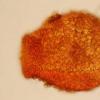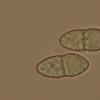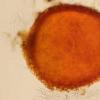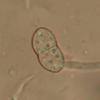
13-09-2021 15:54
 Zuzana Sochorová (Egertová)
Zuzana Sochorová (Egertová)
Hello,while making a section of Scutellinia olivas

13-09-2021 09:47
 Zuzana Sochorová (Egertová)
Zuzana Sochorová (Egertová)
Hello,please, could somebody provide a key to Caly

30-07-2021 00:01
 Philippe Larue
Philippe Larue
Bonsoir à tous, Un sujet récent sur notre forum

08-09-2021 22:32
Marja PennanenHello forum, I have found these dark greyish ones

08-09-2021 18:25
De esta mañana en un campeo a la orilla de un rio

07-09-2021 20:35
 Zuzana Sochorová (Egertová)
Zuzana Sochorová (Egertová)
MollisiaHello,please, how would you determine this
 Hello,
Hello,while making a section of Scutellinia olivascens using the stereomicroscope, I noticed little scarlet nectrioid fungi growing nearby.
They are from the Czech Republic, from a locality in 180 m a.s.l., and were growing on tiny roots in a very wet place, close to a little pond (the most frequent tree in the locality is Salix). Apothecia grow in a group.
Ascospores distinctly warted, 1-septate, (14.9) 15.6 - 16 (16.2) × (6) 6.1 - 6.8 (6.9) µm, Q = 2.3-2.7
Me = 15.7 × 6.4 µm; Qe = 2.4
I used the key by Hirooka et al. 2012 (https://www.ncbi.nlm.nih.gov/pmc/articles/PMC3310236/)
It leads me to the point 19, when one has to decide between N. australiensis (a bit smaller ascospores + known from Oceania) and N. noackiana (totally wrong spore size + known from Brazil). When I make a compromise and jump on „known from alpine regions" (instead of temperate to subtropical), I would end at N. berberidicola. But the substrate in my collection is not Berberis :-)
Therefore, I think I am probably searching in a wrong genus.
Could you give me an advice, please?
Thank you, Zuzana



thank you very much!
It seems to be difficult to determine this fungus with certainty without cultivating or sequencing. According to this paper, the spores in my specimens are small for the true T. veullotiana, but species with a better fitting spore size are not known from Europe.
https://www.researchgate.net/publication/229015577_Multigene_phylogenetic_analyses_of_the_Thelonectria_coronata_and_T_veuillotiana_species_complexes#fullTextFileContent
Zuzana


